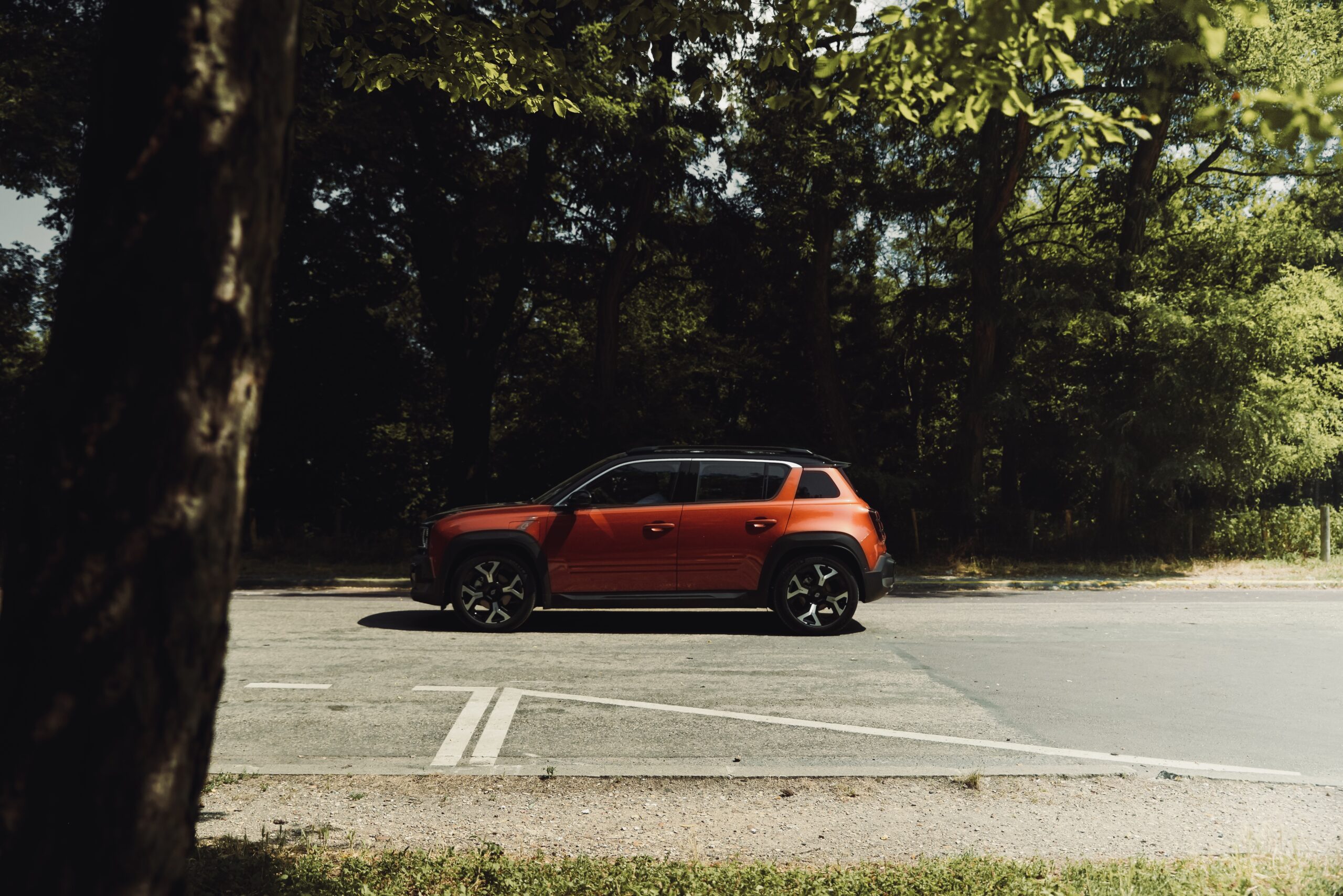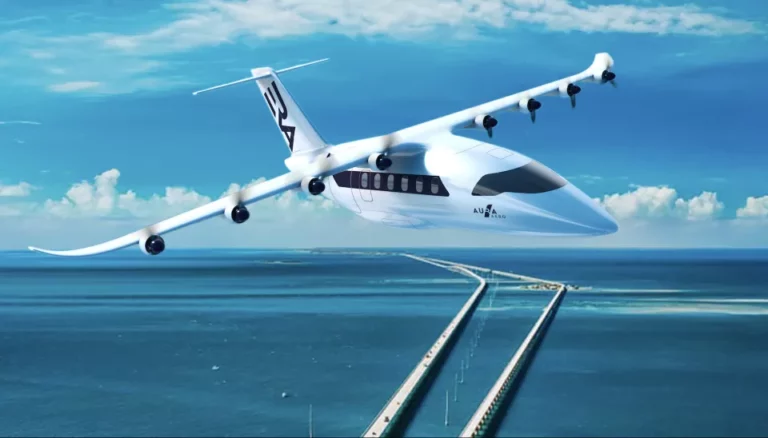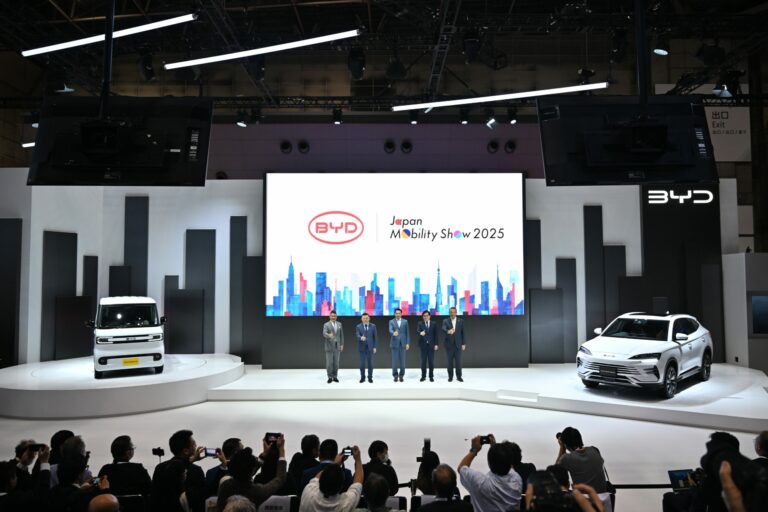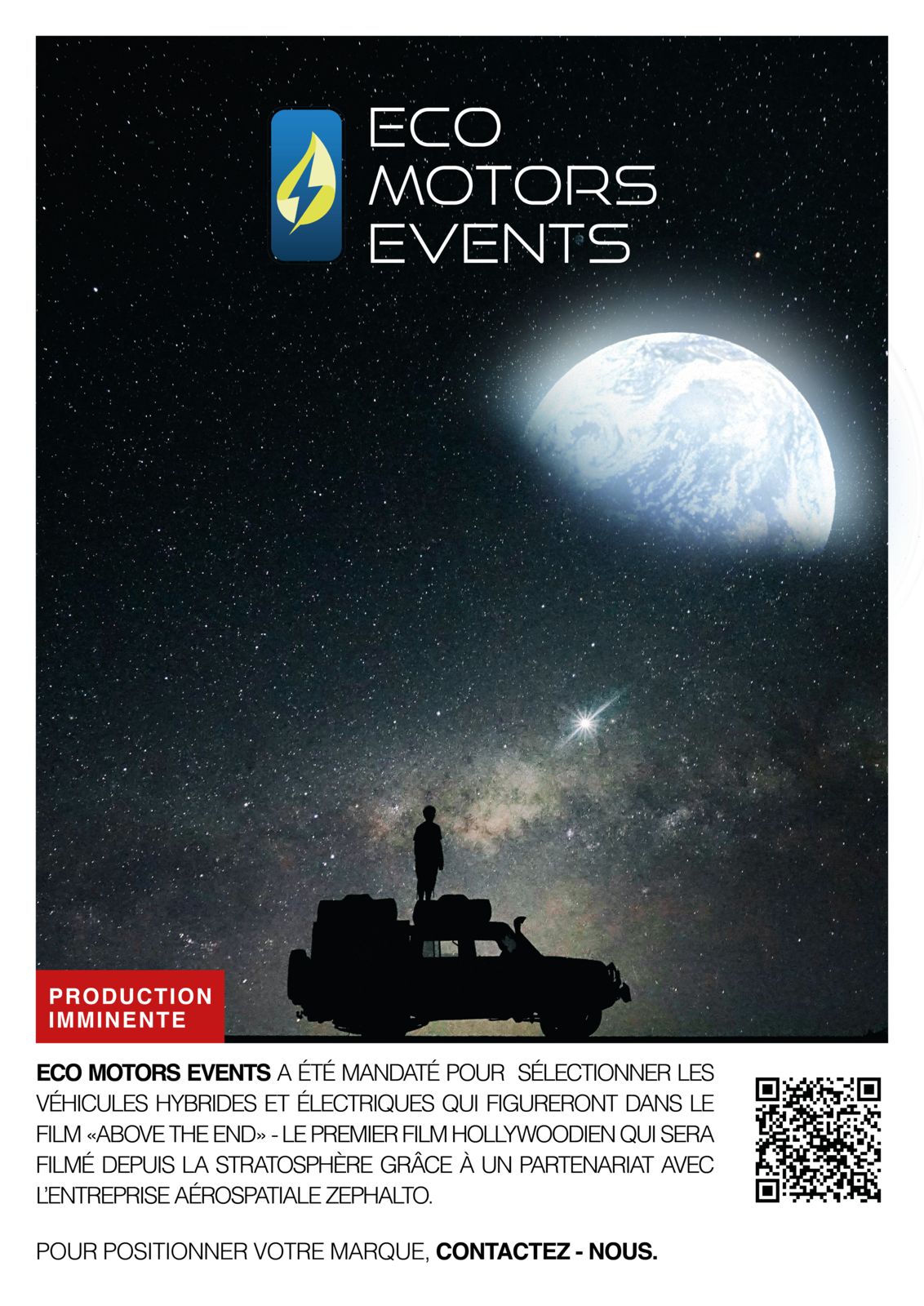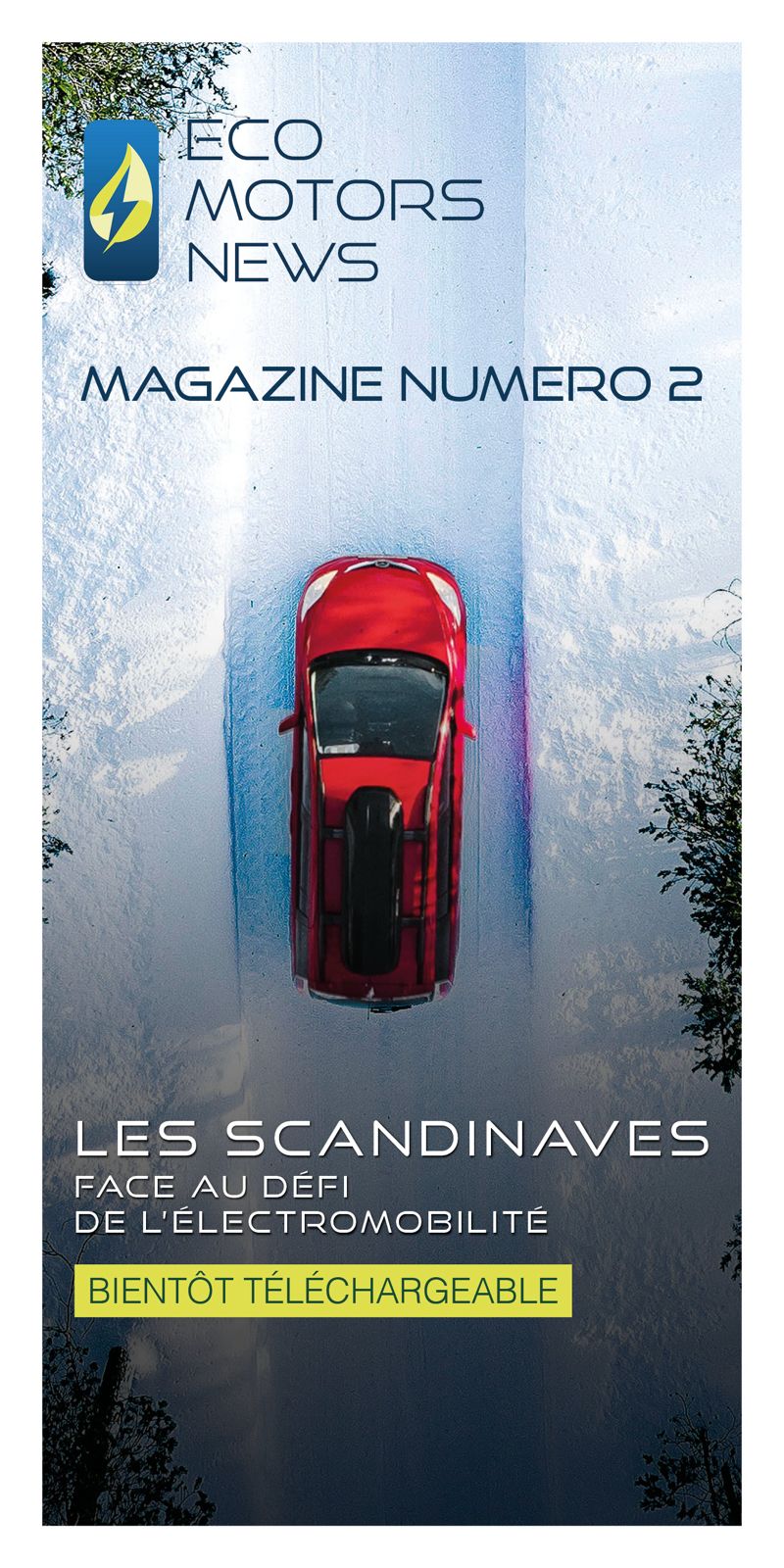After the electric version of the R5, this year’s bestseller in 2025, Renault is bringing back another classic: the 4L. Another iconic car from the French brand, it has also been given an electric version, and ECO MOTORS NEWS had the chance to test it. Discover the Renault 4.
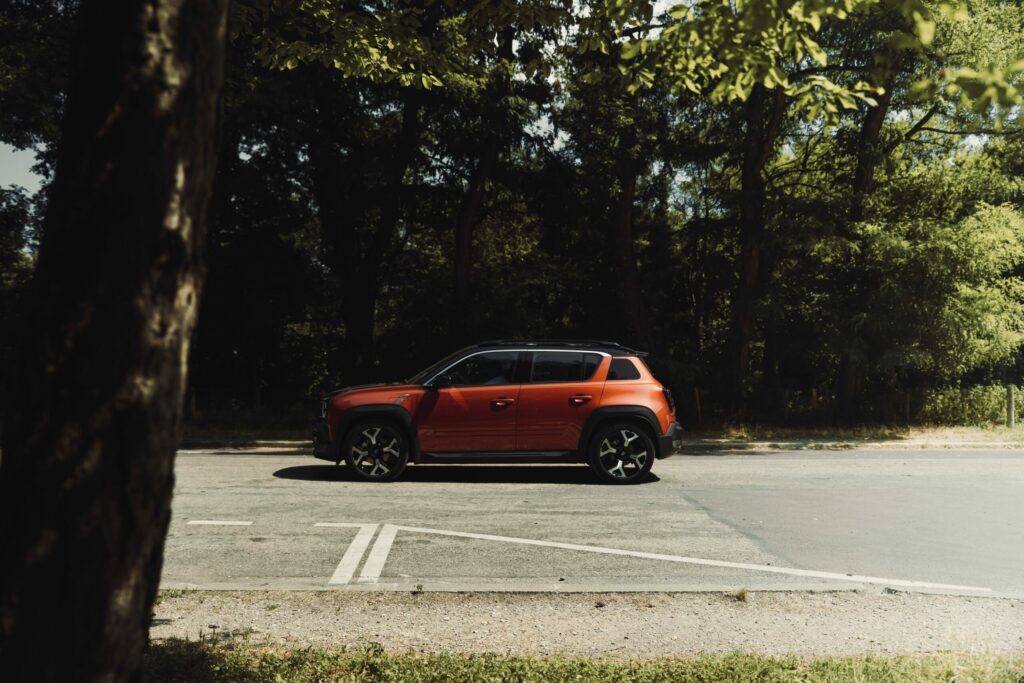
Boulogne-Billancourt, Paris region. Under a blazing sun, the ECO MOTORS NEWS team had an appointment with an icon: the 4L. But not the one your uncle keeps in his barn, or the one your father learned to drive on—no, this is the 2025 model, 100% electric. The Renault 4 E-Tech, just like the R5 a few months earlier, is part of the brand’s strategy to bring back its most iconic models in electric form.
Ours is two-tone, in terracotta brown and black, equipped with the most powerful engine in the range: 52 kWh, promising 410 km of range and 150 horsepower. And, in true ECO MOTORS NEWS fashion, we decided to “test its limits”: city centre driving, tight shopping centre parking, moderately congested main roads, rush-hour ring roads, major interchanges, and also, to let it breathe a little, a trip to the Bois de Boulogne.
This Renault 4 E-Tech positions itself as a compact sedan / small SUV / large adventurous city car; in short, it’s unclassifiable. Just like its illustrious predecessor. So, let’s see if it can live up to the versatility it promises!

Neo-retro and electric rustic
Without going overboard, the Renault 4 E-Tech retains many visual cues from the 4L: vertical grille, bulging bonnet, pronounced wheel arches, high ground clearance, small quarter windows, and oval rear lights. The result is appealing, striking a balance between a clear homage and a design anchored in 2025, measuring just over 4.10 metres. The connection to the original 4L doesn’t stop at the exterior design.
Inside, the driving position, although adjustable, retains a certain rustic feel, with a high seat and relatively upright backrest, evoking the spirit of the time. The slightly raised knees reinforce this sensation. The fabric seats with contrasting stitching and the gear lever behind the steering wheel, just like the 1960s 4L, also echo the original model.
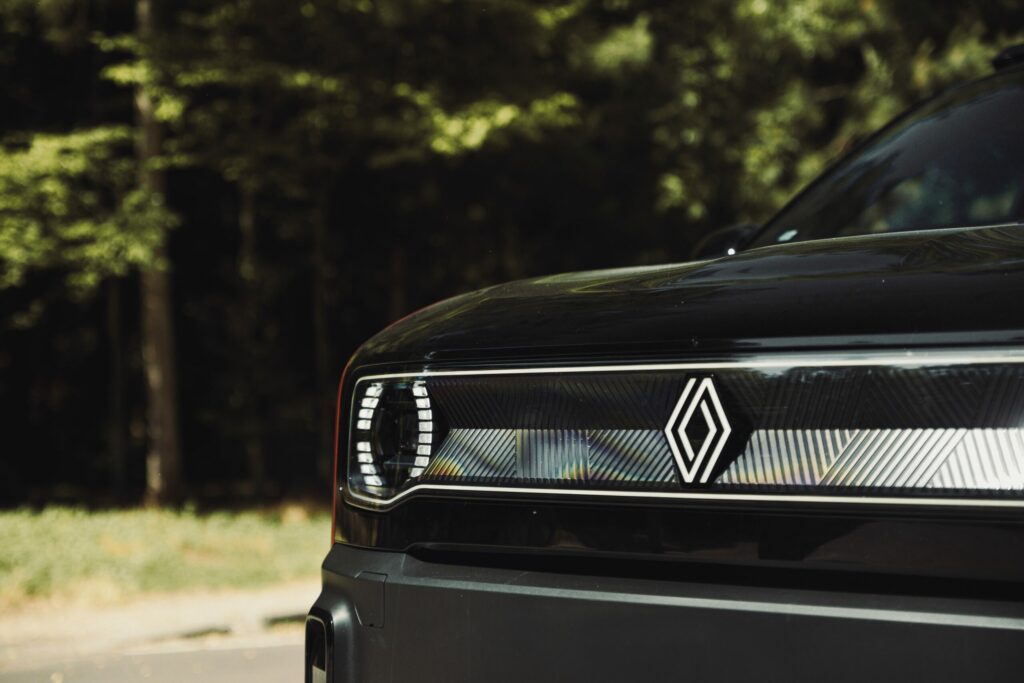
Visibility is generally good, although the rounded bonnet can initially make the car seem longer than it really is. After a few hours, one quickly adapts. Overall ergonomics are well thought out, with a spacious cabin and a generous boot for the category. Special mention goes to the steering wheel, particularly pleasant to hold, offering responsive and precise steering. The car responds quickly to inputs, which is one of its major strengths.
Versatility and… dynamism!
Behind the wheel, this 52 kWh version impressed us immediately with its driving pleasure. Acceleration is sharp, torque delivery instant—classic, but always enjoyable in an electric car—and braking is effective. The « One Pedal » mode is perfectly tuned: intuitive, easy to modulate, and especially pleasant in city traffic.
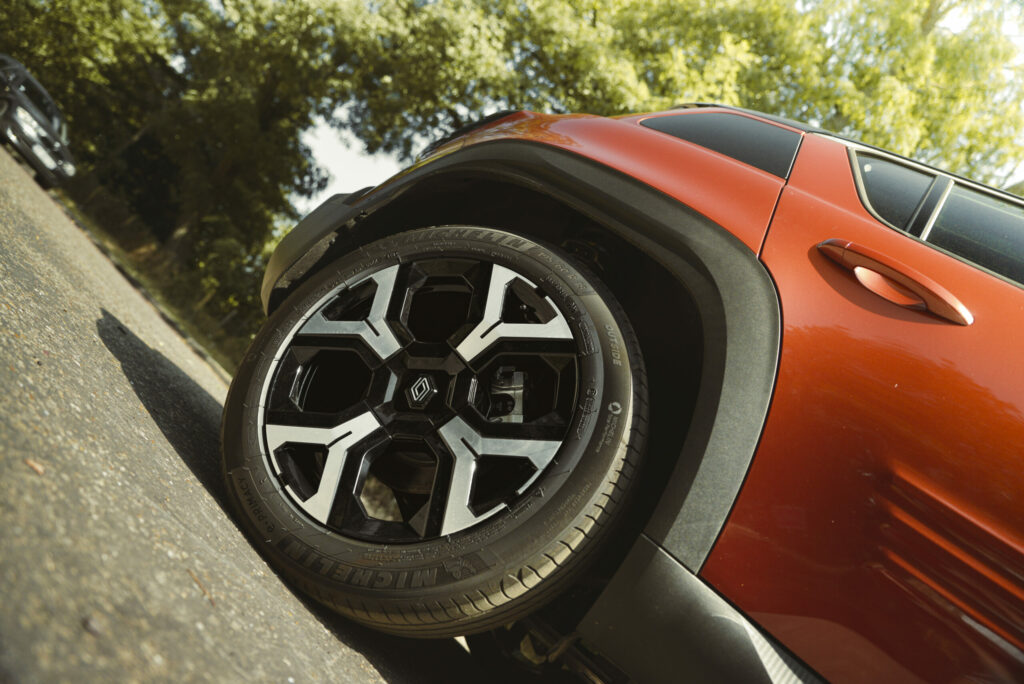
Its handling is surprisingly good. Despite a soft chassis and equally soft suspension, the Renault 4 Electric remains agile. Its substantial weight (over 1.5 tonnes empty) is barely noticeable behind the wheel. In the city, it excels thanks to manoeuvrability and a tight turning radius (10.8 m, slightly less than its main competitor, the Opel Mokka), while on winding roads, it offers sensations close to those of a small GTI! Perhaps we’re exaggerating slightly, but it’s a genuine surprise, making driving enjoyable and more dynamic than expected.
Equipment highlights
As mentioned earlier, the gear lever, while adding personality to the cabin, lacks responsiveness and requires an adaptation period. The volume controls above the central screen are also a bit “old school”—a charming retro nod, but not quite in line with modern expectations, especially at this price point. The reversing camera disappoints with its definition, reminiscent of standards from a decade ago.
Finally, the range indicator proved imperfect during the test. While the percentage display remains reliable, the kilometre reading sometimes lacks precision. During our trial under tough conditions (full boot, three passengers, scorching heat, air conditioning at maximum, frequent manoeuvres), the on-board computer showed a notable discrepancy: after 100 km, the battery dropped from 100% to 62%—consistent—but the remaining range in kilometres fell from 410 to 218 km, a nearly 50% loss, hard to explain.

But there are positives. The steering wheel not only offers excellent ergonomics but also houses all key controls: regenerative braking, One Pedal, driving modes (including a customisable one), etc. The digital dashboard is high quality, as is the central screen. Renault has partnered with Google and integrated AI developed with ChatGPT, while also allowing Apple CarPlay connectivity.
Heated steering wheel and seats are a major plus, especially in winter, as they reduce the need for heating and therefore preserve range. The “cockpit” layout, with a line of buttons below the screen, makes everything easy to access, intuitive, and practical. The sound system, with nine Harman Kardon speakers, is very pleasant. Overall, the equipment is up-to-date, and the finishings are excellent.
Popular in spirit, less in price
The question remains whether this electric R4 is truly a “popular car.” By popular, we mean a car that “speaks” to everyone. That was the case with the 4L, but also with the R5, Clio, Scénic, and Twingo from Renault, Peugeot 106, 205, 206, Citroën BX, DS, Xsara, or Volkswagen Golf. The list is not exhaustive, but it gives an idea. To enter this category, several criteria must be met: spirit, price, and longevity.
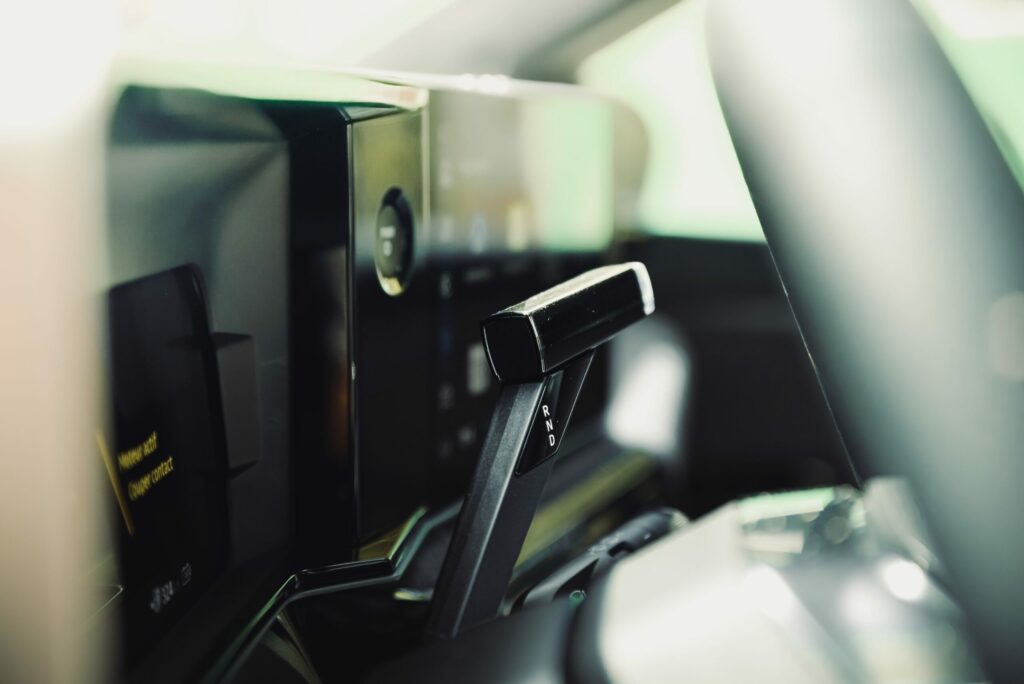
In terms of spirit, the Renault 4 E-Tech retains the 4L’s DNA: a simple, practical car designed for family use and daily driving. Its comfort, versatility, and driving pleasure make it unclassifiable—between a small SUV and a large compact sedan, versatile and highly convincing. During our test, many passersby turned their heads, showing that the 2025 R4 sparks curiosity. Some even stopped to chat with the team about their personal memories with the 4L and how this 2025 version brought them back to those times.
Regarding price, it starts at €29,990 for the 40 kWh version and €37,490 for the 52 kWh version we tested. This makes it somewhat less accessible than its predecessor. But that is also the cost of French production in Maubeuge and a level of finish bordering on premium.
Finally, longevity is still to be seen. Only time will tell if the Renault 4 E-Tech becomes as iconic as its ancestor. From ECO MOTORS NEWS’ perspective, we are rather optimistic!
ECO MOTORS NEWS notes on the Renault 4
| Range | 3,5/5 |
| Comfort | 4/5 |
| Driving pleasure | 5/5 |
| Technology | 3,5/5 |
| Versatility | 4/5 |
- Model Tested: Renault 4 E-Tech 52 kWh
- Range: 410 km (WLTP)
- Fuel consumption: Between 14.7 kWh/100km and 15.6 kWh/100km
- 0 to 100 km/h: 8.5 s
- Top speed: 150 km/h
- Boot capacity: 420 litres
- Price: €37,490

